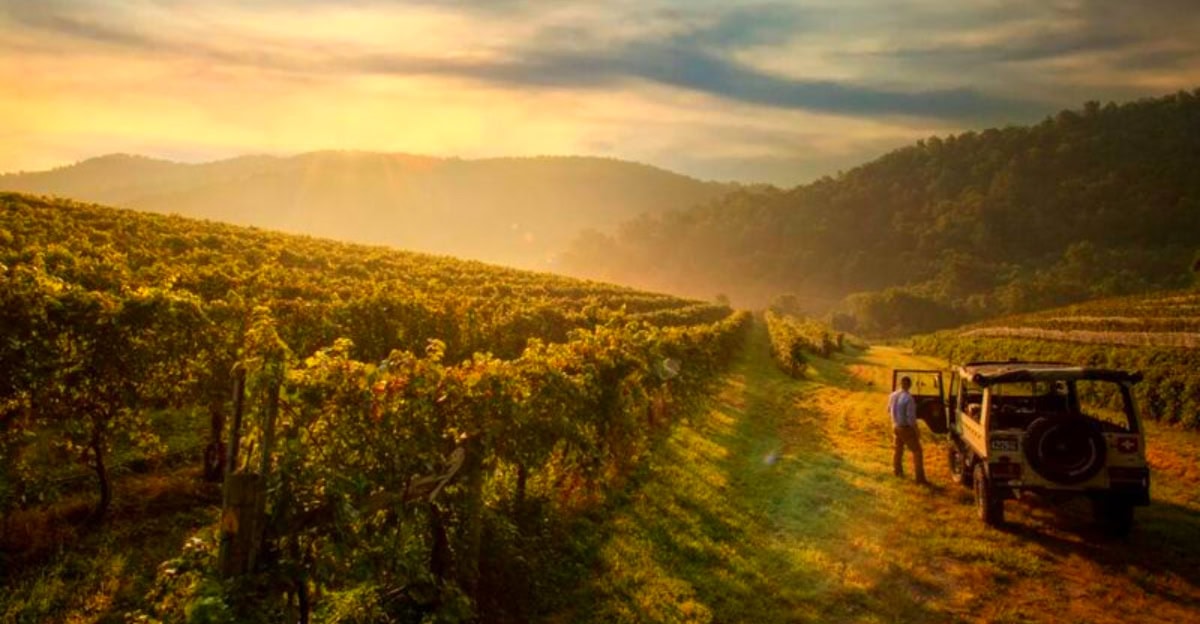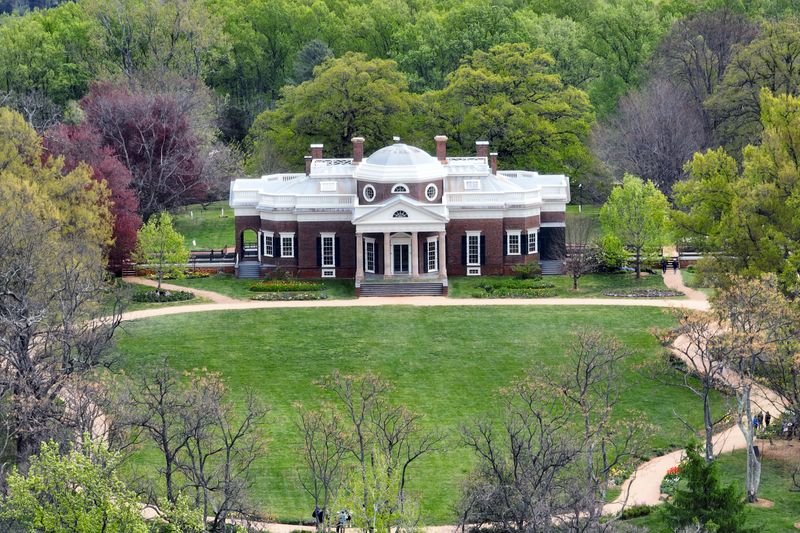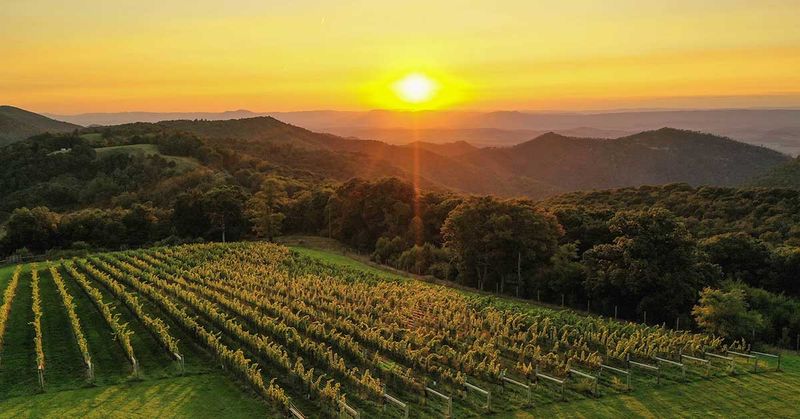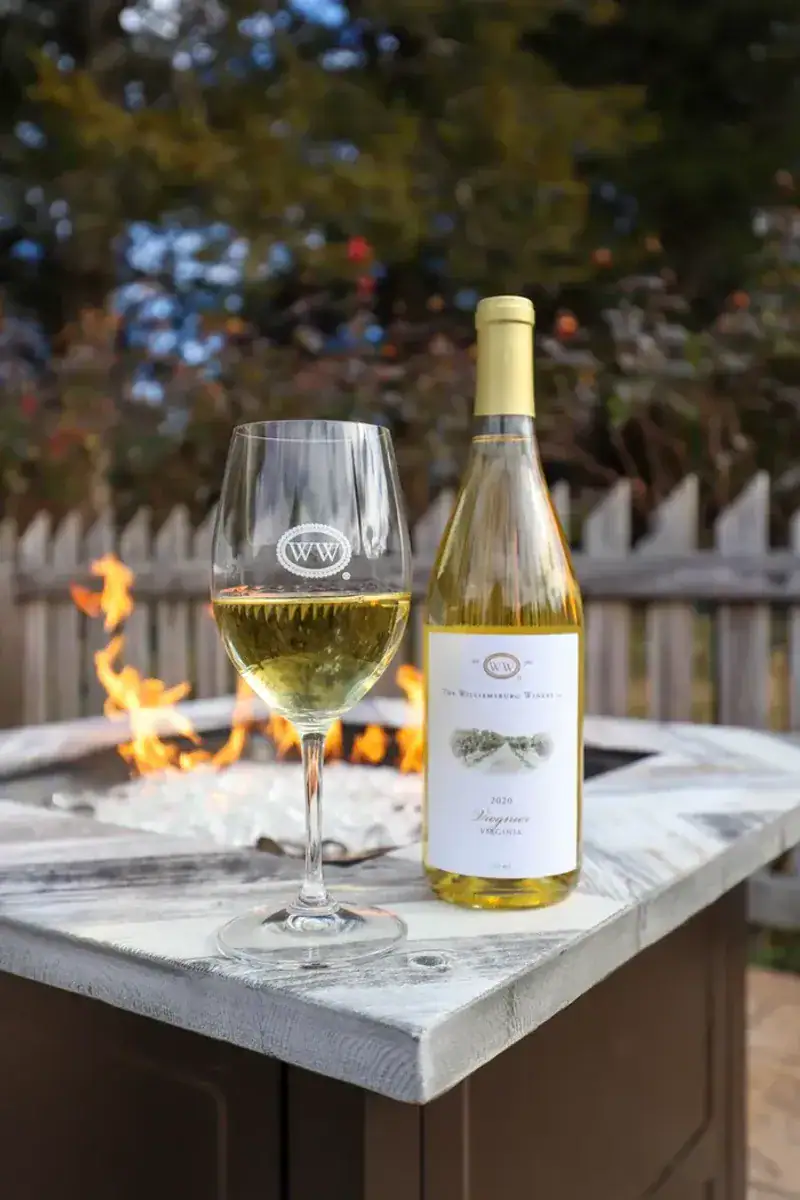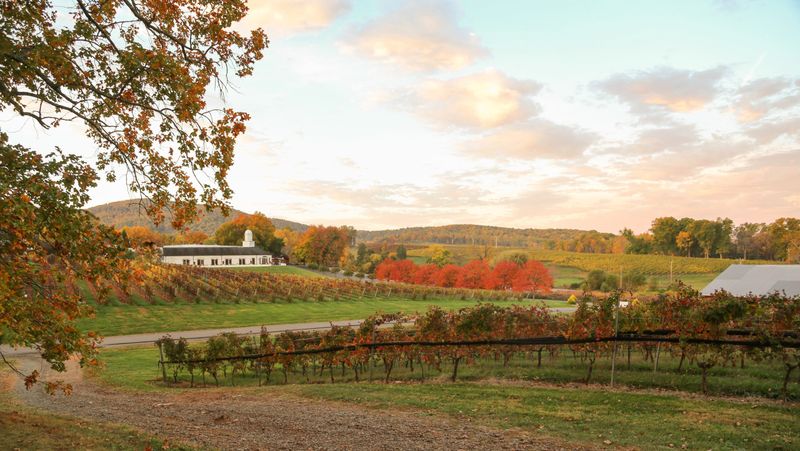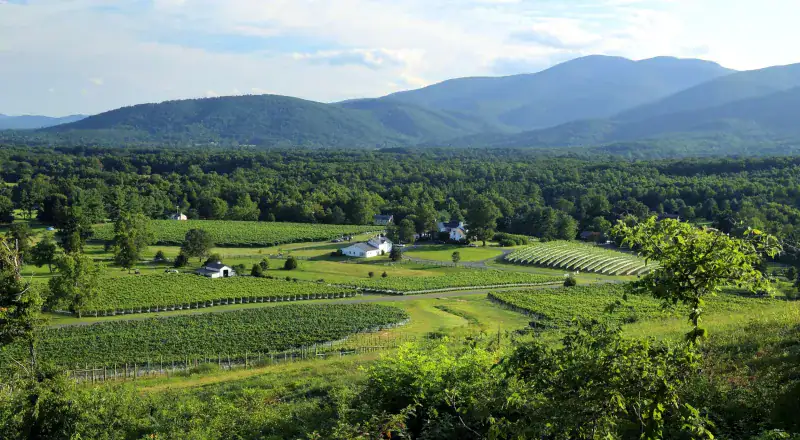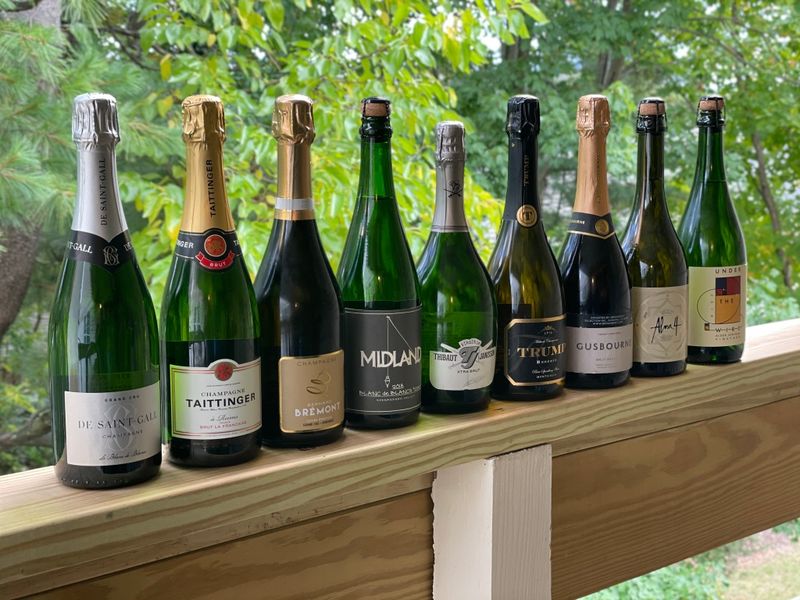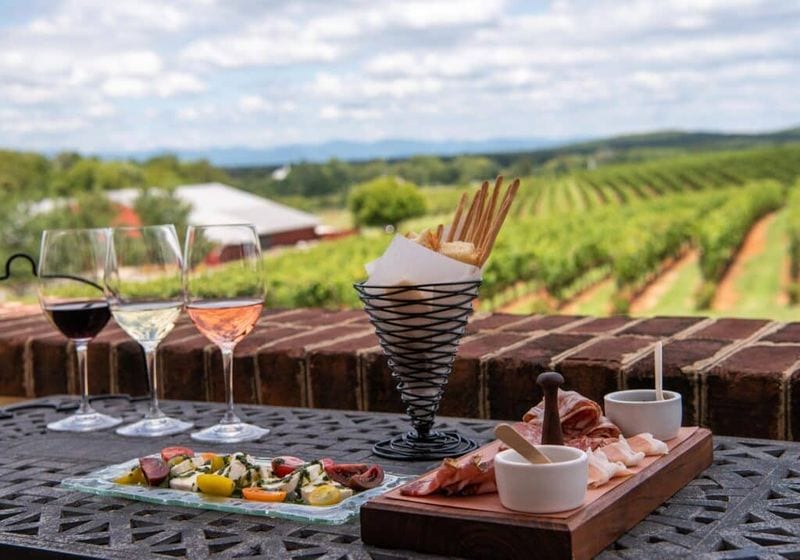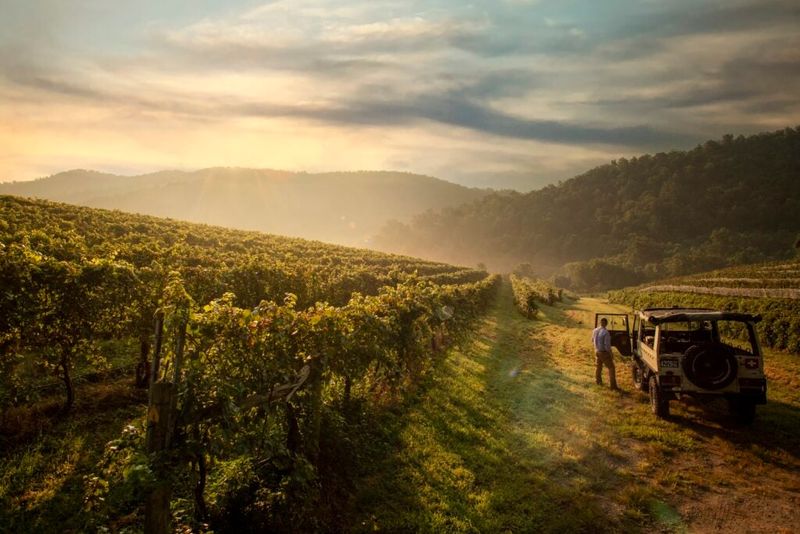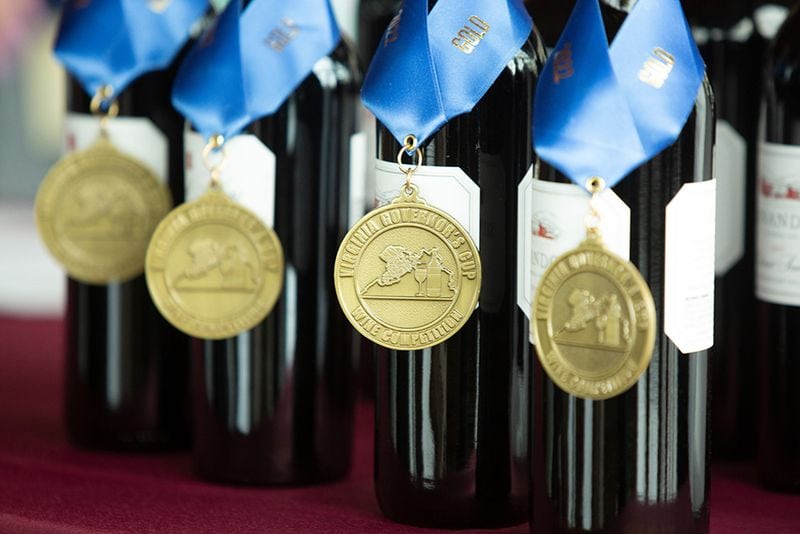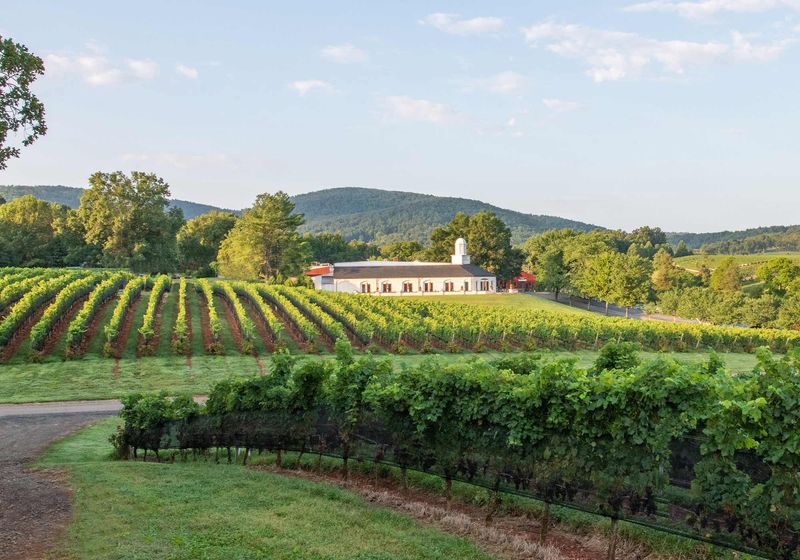Explore the intriguing and diverse wine scene in Virginia, a region quietly emerging as a rival to California’s renowned Napa Valley. With a rich historical backdrop, diverse grape varieties, and a unique terroir, Virginia’s wineries are crafting exceptional wines that capture the attention of connoisseurs worldwide. This blog post delves into ten compelling facts about Virginia’s wine industry, highlighting its history, innovation, and the intimate experiences it offers visitors.
1. A Wine Legacy Rooted in Jefferson’s Dream
Thomas Jefferson imagined Monticello as America’s vineyard, though his efforts struggled. Today, Virginia’s wineries embody his vision, producing award-winning wines with Old World charm and Southern flair. Unlike Napa’s commercialized image, Virginia offers a historic and intimate experience. Viognier, the state’s signature grape, thrives here, providing a taste of Virginia’s unique terroir. Winemakers embrace experimental techniques, blending tradition with resilience. This historical connection makes each bottle a continuation of Jefferson’s dream, offering more than just wine—a narrative that begins with Jefferson’s ambition.
2. Terroir That Marries Old World and New
Virginia’s terroir blends mineral-rich Piedmont soils with a climate tempered by mountains and the Atlantic, producing wines that echo European elegance with an American twist. Unlike Napa’s consistency, Virginia’s unpredictable weather challenges vintners to adapt annually. This results in complex wines with freshness and a strong sense of place. Cabernet Franc flourishes here, offering elegant reds, while Viognier bursts with floral aromas. With varied microclimates, visitors can experience diverse wine regions within Virginia, making each trip unique and adventurous.
3. Viognier: The Star Grape of the Commonwealth
Virginia’s wine scene champions Viognier, a white grape thriving in the state’s climate, delivering wines with stone-fruit flavors and crisp acidity. Unlike Napa’s preference for Chardonnay, Virginia Viogniers offer subtle honeysuckle notes, pairing well with local cuisine. These wines have won international awards and appear on elite wine lists, admired for their balance and regional identity. For those seeking alternatives to usual Napa Chardonnay, Virginia Viognier presents elegance and a distinct local character, celebrated for its aromatic yet refreshing profile.
4. Small-Batch Wineries with Big Ambitions
Virginia’s wine scene thrives on boutique wineries focused on craftsmanship. Unlike Napa’s corporate giants, many Virginia wineries are family-owned, producing limited, carefully crafted batches. Visitors can often meet the winemaker, explore the vineyards, and taste unique blends. Wineries like Barboursville and Linden set high standards, while smaller producers innovate with Pet-Nat sparklers and natural wines. This community-driven culture fosters innovation and offers travelers a sense of authenticity and discovery, far from Napa’s crowded tasting rooms, creating a feeling of belonging in every pour.
5. Wine Trails Woven Through History
Virginia’s wine regions are steeped in history, blending vineyards with American heritage sites. The Monticello Wine Trail includes Jefferson’s estate, while the Loudoun County Wine Trail mixes colonial towns with modern tasting rooms. Unlike Napa’s resort feel, Virginia combines wine with Revolutionary battlefields and horse country charm. Visitors can sip Merlot near Manassas or enjoy sparkling rosé overlooking the Shenandoah Valley. These trails offer more than wine; they provide a journey through time, enhancing the experience beyond the glass and creating an intoxicating blend of past and present.
6. The Rise of Sparkling Wines
Virginia’s cooler climate and elevations position it as a sparkling wine contender. Traditional méthode champenoise gains traction, with Thibaut-Janisson leading the charge. Their sparkling wines have been served at White House events, putting Virginia fizz on the map. The state’s variable climate benefits sparkling wine production by enhancing grape acidity. Unlike California’s ripe fruit, Virginia’s sparklers offer refined crispness, akin to European styles. Travelers, often surprised by Virginia’s offerings, find these wines elegant and celebratory, adding an American twist to sparkling wine, making them a rising star.
7. A Culinary Companion to Local Flavors
Virginia wine shines when paired with local cuisine. Chesapeake oysters and Piedmont cheeses find perfect partners in Virginia bottles. Crisp Chardonnays and Albariños enhance seafood’s sweetness, while peppery Cabernet Francs complement hearty Appalachian stews. Unlike Napa’s imported culinary experiences, Virginia embraces farm-to-table authenticity, rooted in agricultural heritage. Many wineries double as culinary destinations, offering seasonal menus sourced from nearby farms. This harmony between vineyard and kitchen enhances the sense of place, making a Virginia wine experience about more than what’s in the glass—it completes the flavors of the land.
8. Diversity Across Its Regions
Virginia boasts over 300 wineries across eight AVAs. Each region offers distinct character: Monticello’s historic estates, Shenandoah Valley’s vistas, and Middleburg’s horse country charm. Coastal vineyards provide maritime freshness, while higher elevations preserve acidity. Unlike Napa’s unified identity, Virginia thrives on diversity. Travelers can explore Bordeaux blends one day and mountain-grown Petit Manseng the next. This variation ensures no single “Virginia wine”—there’s a mosaic of expressions. This variety keeps visitors returning, eager to discover what each region and vintage offers, a testament to Virginia’s dynamic wine landscape.
9. Global Recognition and Awards
Virginia wine has transcended local fame, earning international acclaim. Wineries like Barboursville have received accolades in global competitions, positioning them alongside prestigious European and Californian labels. Publications like Wine Enthusiast recognize Virginia as a serious player, with sommeliers globally adding these bottles to their lists. Unlike Napa’s swift rise to fame, Virginia’s journey is gradual, an underdog story that resonates with each award. Wine lovers find Virginia bottles intriguing, as if discovering a secret before the world. This recognition underscores Virginia’s commitment to quality and innovation.
10. A More Intimate Wine Tourism Experience
Virginia’s wine country offers an intimate, accessible experience, unlike Napa’s commercialized scene. Visitors engage directly with winemakers, explore uncrowded vineyards, and enjoy leisurely tasting flights. The setting blends rustic charm with refined hospitality, whether at farmhouse wineries or modern tasting rooms. Accommodations range from cozy bed-and-breakfasts to vineyard-side cottages, encouraging personal exploration. For travelers valuing authenticity over spectacle, Virginia provides wine tourism that feels less industrial and more like an invitation into a community, an experience that Napa, once known for, has outgrown.
